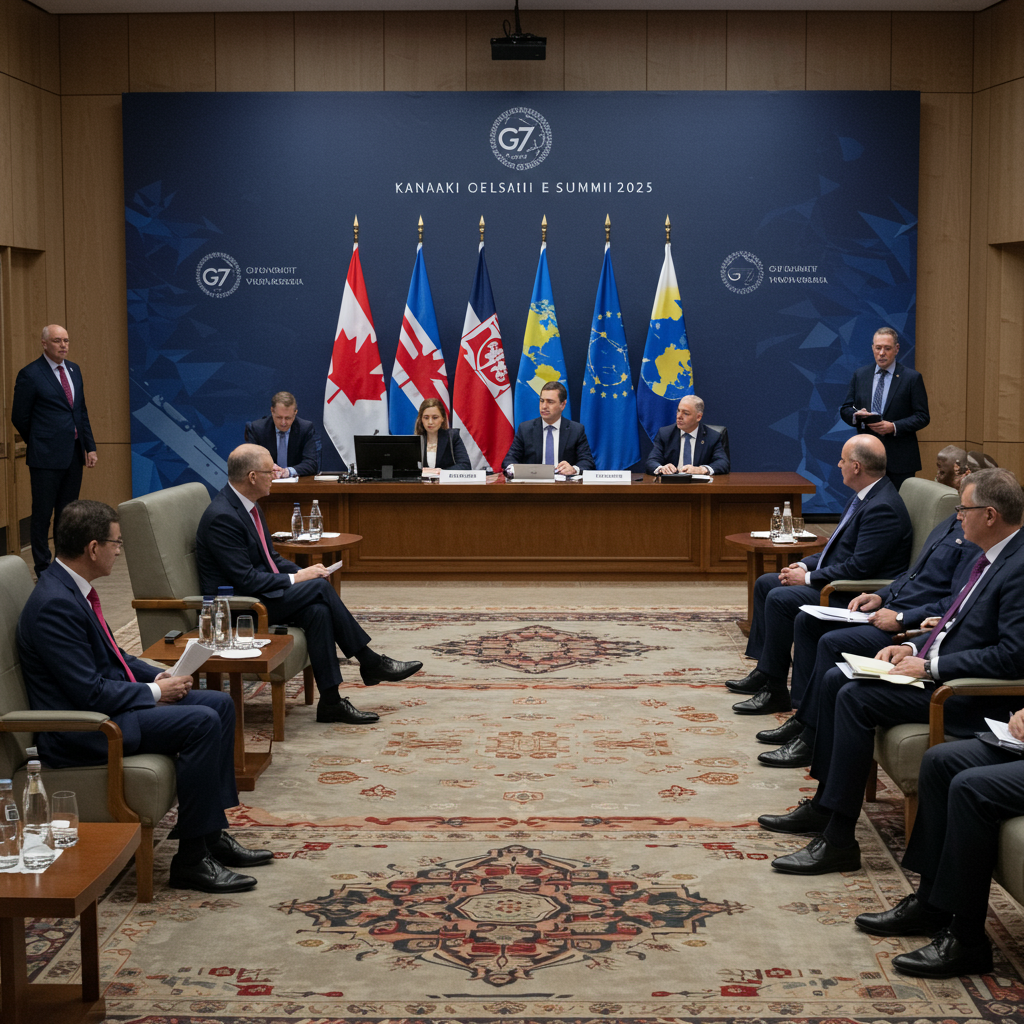The high-stakes economic confrontations between the United States and China during the Trump administration redefined global trade. What often began with brinkmanship, including threats of crippling tariffs, frequently concluded with tense negotiations. While President Donald Trump initially declared a trade war he believed America could easily win, expert analysis, drawing from various sources, reveals a more complex reality: China frequently held a strategic advantage, compelling Washington to recalibrate its approach. This article delves into the multifaceted reasons behind China’s surprising leverage, exploring its economic indispensability, geopolitical maneuvering, and political resilience.
The Volatile Landscape of US-China Trade Brinkmanship
Weeks of escalating tensions often preceded a crucial face-to-face meeting between then-President Trump and Chinese President Xi Jinping. Such encounters, like the one scheduled on the sidelines of a South Korea summit, typically followed a period of intense economic threats. Trump, for instance, famously brandished the possibility of an additional 100 percent tariff on Chinese goods. This was part of a broader series of escalations, met in kind by Beijing, which included imposing sweeping new controls over crucial rare earth minerals.
The Strategic Weaponization of Rare Earth Minerals
China’s decision to restrict exports of rare earth minerals represented a significant strategic countermeasure. These minerals are indispensable for numerous U.S. industries, from advanced electronics and batteries to critical military technology. Experts noted that developing alternative supply chains for rare earths could realistically take a decade or more, leaving U.S. manufacturers vulnerable with stockpiles potentially depleting within months. This stark dependency highlighted a critical vulnerability for the United States, granting China substantial leverage.
Unpacking China’s Multi-Faceted Strategic Advantage
Contrary to early assumptions, China’s position in the trade war was often stronger than perceived. Beijing’s extensive preparations and broader ambitions to reshape the future global order underpinned its firm stance. China consistently refused to engage in negotiations unless all tariffs were first lifted, demonstrating a resolve that initially surprised Washington and the international community.
Economic Indispensability: Why China’s Goods Outweighed US Dollars
A core reason for China’s advantage stemmed from a fundamental flaw in the “trade deficit equals losing” mentality. The United States, it became clear, relied more heavily on China’s vast array of goods, critical minerals, and industrial inputs than China relied on American dollars. While China could mitigate the impact of lost U.S. sales by boosting domestic spending or expanding exports to other global markets, the U.S. lacked the immediate capacity to replace the comprehensive range of products sourced from China. This reliance extended to electronics, pharmaceutical ingredients, and countless manufactured goods, making a swift, independent pivot practically impossible for American industries.
Geopolitical Isolation: Allies Hesitated to Join the Fray
Trump’s strategy to pressure China included enlisting key allies like the European Union and Japan. However, this effort largely failed to materialize. Both Japan and the European Commission explicitly resisted calls for an anti-China economic bloc, citing their own significant trade ties and reliance on Chinese exports. Allies also perceived the U.S. as an unreliable trade partner, given Washington’s aggressive imposition of tariffs on its own trading partners. Furthermore, the absence of clear, achievable demands from the U.S. provided little incentive for allies to align against China, particularly when America’s primary goal was to resolve a trade deficit that offered no direct benefit to them.
Political Resilience: The CCP’s Insulation from Electoral Pressures
China’s authoritarian government structure afforded it a significant political advantage. Unlike democratic leaders, the Chinese Communist Party (CCP) faces no electoral pressure, granting it greater latitude to endure economic strain. President Xi Jinping could readily deflect public discontent over economic downturns by blaming the U.S. as the aggressor. This often strengthened his political standing domestically. In stark contrast, the trade war proved politically damaging for President Trump and the Republican Party, with public approval of his economic management reportedly dropping and threatening GOP control of Congress as economic impacts began to materialize.
A Shifting Global Order: Beyond Bilateral Disputes
Niall Ferguson, a prominent historian, offered a provocative perspective: Trump’s tariff war was not merely about protectionism or destabilization, but rather a “wild decolonization project” signaling the breakup of the American empire that emerged 80 years prior. This marked the definitive end of the era of free trade, with profound, often unrecognized, consequences for the U.S.’s role on the world stage and the established global order.
The Elusive “Big Deal” and Persistent Distrust
Despite China’s firm posture, its actual responses were often measured. Beijing initially matched U.S. tariffs tit-for-tat before symbolically escalating further. Beyond tariffs, China challenged U.S. policies at the World Trade Organization, restricted critical mineral exports, and vowed to “fight to the end.” While China sought a “big deal” involving mutual concessions to de-escalate tensions, skepticism persisted regarding the longevity of any agreement, largely due to Trump’s perceived “erratic” nature and his singular focus on “winning.” Critical issues, including tech export restrictions, Chinese purchases of U.S. agricultural products, and fentanyl, remained largely unresolved. U.S. agricultural exports to China, particularly sorghum and soybeans, plummeted, causing significant frustration among American farmers.
TikTok and Beyond: A Glimpse into Future Engagements
Beyond the overarching trade war, specific issues like the fate of the social media application TikTok became central to high-level discussions. A direct call between Trump and Xi, for instance, aimed at finalizing a deal to allow TikTok’s continued operation in the U.S. This involved intricate negotiations around data security, intellectual property, and the divestiture of its Chinese parent company, ByteDance, addressing U.S. national security and data privacy concerns. The ongoing dialogue, even on seemingly isolated issues, underscored the intertwined nature of technology, trade, and national security in the US-China relationship.
Frequently Asked Questions
What were the primary reasons China reportedly held the strategic advantage in the US-China trade war?
China’s strategic advantage stemmed from multiple factors. Firstly, the U.S. had a greater dependency on China’s vast array of goods, critical minerals, and industrial inputs than China did on U.S. dollars. China could more easily pivot economically. Secondly, U.S. attempts to rally allies against China largely failed, as countries like Japan and the EU had their own significant trade ties and perceived the U.S. as an unreliable partner. Lastly, China’s authoritarian government was insulated from electoral pressures, allowing it to absorb economic strain and deflect blame more effectively than the U.S. administration.
How did the US-China trade tensions impact global allies and their willingness to cooperate with the U.S.?
U.S. attempts to enlist allies like the European Union and Japan to collectively pressure China largely met with resistance. These allies were disinclined to join an anti-China economic bloc due to their own substantial trade relationships and reliance on Chinese exports, particularly critical minerals. Furthermore, they viewed the U.S. as an unpredictable trade partner, given its unilateral imposition of tariffs. This reluctance meant that the U.S. was largely isolated in its trade conflict, diminishing its collective bargaining power.
What was the broader geopolitical implication of Trump’s trade strategy, beyond immediate economic concerns?
Historians like Niall Ferguson proposed that Trump’s trade strategy, characterized by tariffs and protectionism, signified a fundamental shift: the “breakup of the American empire” and the definitive end of the era of free trade. This “wild decolonization project” challenged the 80-year-old American-led global order. The implications extended beyond economic metrics, raising profound questions about the future of U.S. unilateralism, the weaponization of economic power, and the potential for a new, more fragmented global landscape.
The US-China trade dynamics under the Trump administration proved to be a pivotal period, revealing vulnerabilities, testing alliances, and signaling potentially irreversible shifts in the global economic and geopolitical order. China’s ability to withstand pressure, leverage its economic indispensability, and exploit geopolitical realities often gave it a strategic edge, prompting a reevaluation of traditional power dynamics. As the world continues to navigate complex bilateral relations, understanding these past confrontations provides crucial insights into the evolving landscape of international trade and global influence.



